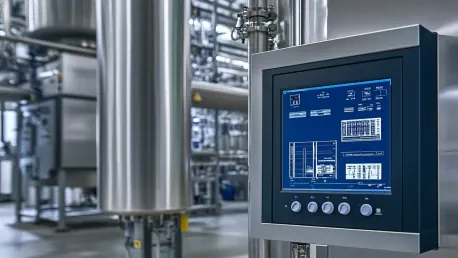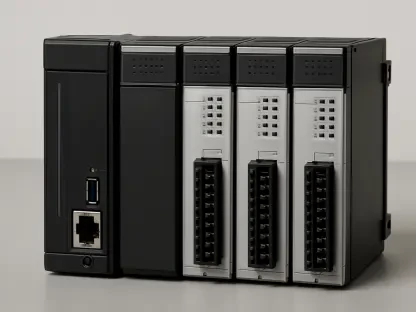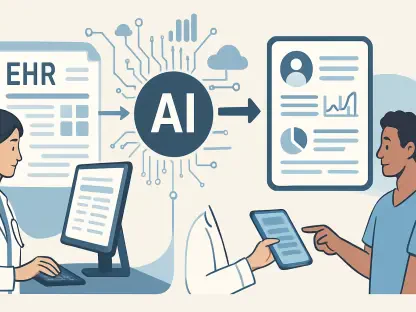Distributed Control Systems (DCS) have undergone significant transformations since their initial development. Emerging in the 1980s and 1990s, these systems have evolved continuously, driven by incremental advancements in technology and design. However, the current demands of the process control industry have rapidly evolved, necessitating a fundamental reimagining of what DCS can achieve. This evolution is influenced by the accelerating pace of digitalization and modern operational requirements.
The Shift in DCS Requirements
In today’s digital era, the essential purpose of a DCS—connecting field devices to process controls—remains unchanged. However, the scope and expectations of DCS functionalities have expanded dramatically. Contemporary DCS must be web-based to ensure seamless integration with back-office IT systems, enhance automation capabilities, and guarantee high availability. These systems must also facilitate secure information exchange, cater to various operational modalities, and support remote work and maintenance.
The shift in industry requirements is propelled by a combination of technological advancements and changing operational practices. The retirement of seasoned operators has created a pressing need for systems that are not only highly automated but also intuitive and user-friendly, allowing less experienced personnel to operate them effectively. The capability for remote operations and maintenance has also become crucial, reflecting the evolving nature of the industrial workforce and the demand for flexible, adaptable systems.
Valmet’s Strategic Redesign
In recognition of the evolving needs of the industry, Valmet, a leader in automation technology, made the strategic decision to completely redesign its existing DCS, Valmet DNA, which was first introduced in 2000. The objective was to develop a next-generation system, Valmet DNAe, leveraging modern programming languages, agile development methodologies, and rigorous testing processes. This approach was intended to ensure a robust, fault-tolerant system capable of meeting the current and future demands of the industry.
Valmet’s extensive history in the automation sector significantly informed the redesign process. With a legacy spanning over 220 years in various industries, including pulp mills, paper machines, energy production, and marine and process industries, Valmet brought a deep and nuanced understanding of industry-specific challenges and requirements to the development of DNAe. This wealth of industry experience was instrumental in shaping a system that aligns closely with the needs and expectations of its users.
Emphasis on Cybersecurity
One of the paramount priorities in the development of Valmet DNAe was addressing the increasingly critical issue of cybersecurity. Ensuring robust security in a DCS that requires open and secure connectivity at multiple levels is a significant challenge. Valmet adopted a “security by design” approach, integrating comprehensive cybersecurity measures from the very first line of code.
The Trusted Information Framework (TIF) serves as the foundation of the Valmet DNAe system, enabling secure communication and data management. This framework includes an array of security features such as role-based access control, encryption, authentication, endpoint protection, and detailed audit trails to ensure thorough tracking and monitoring of system activities. The system’s architecture not only guarantees IT security integration but also supports intrusion detection mechanisms to identify and mitigate potential threats proactively.
The DCS integrates all these measures in compliance with the stringent standards of ISO 27001 and IEC 62443 certifications. The development process itself adhered to Security Development Lifecycle Assurance (SDLA), ensuring that security considerations were consistently prioritized and embedded throughout the development phases, resulting in a highly secure and resilient system.
Enhancing User Experience
As the process control industry faces a significant turnover with the retirement of experienced operators, the importance of creating an enhanced User Experience (UX) has become increasingly urgent. To address this need, the Valmet DNAe User Interface was launched with a particular focus on being modern, intuitive, and web-based, compatible with previous generations of the Valmet DNA system.
The dedicated UX design team at Valmet created an interface that is both user-friendly and easy to navigate, requiring minimal training for new users. This was a critical consideration in ensuring that newer, less experienced operators could efficiently manage the system. The design prioritized accessibility, making the interface available across multiple devices, including mobile platforms, to facilitate ease of access and operation from various locations.
The interface is structured to offer a comprehensive view tailored to different user roles, streamlining operations and allowing operators to manage larger process areas with minimal effort. This structure ensures that relevant information is readily accessible based on user priorities, enabling quicker decision-making and more efficient management of process controls.
Advanced Data Management and Analysis
In line with modern industrial requirements, an essential characteristic of the Valmet DNAe system is its advanced data management and analysis capabilities. The system is designed to operate flexibly, whether on-premises, at the edge, or in the cloud, offering scalability to meet diverse operational needs and providing users with various deployment options depending on their specific requirements.
Valmet DNAe employs Apache Cassandra, a highly dependable and scalable distributed NoSQL database. This database ensures high availability and data redundancy through clustering, which allows for continued operation even in the event of a node failure, without risk of data loss or system downtime. This architecture provides a foundation for resilient and reliable data management.
Additionally, the system features an improved Historian, which is specifically designed to collect, store, and analyze vast amounts of data generated by the DCS. This Historian enables users to perform long-term monitoring and analysis of processes, identifying trends, and making data-driven decisions based on comprehensive historical insights. By seamlessly connecting operational technology (OT) with information technology (IT), Valmet DNAe supports secure and efficient data exchange and integration, enhancing real-time insights into plant operations and asset performance.
Seamless Integration with Existing Systems
Valmet places a strong emphasis on ensuring continuity for its customers, recognizing the importance of a smooth transition to new technology. Valmet DNAe offers a clear and gradual upgrade path, allowing existing users of the Valmet DNA system to transition to the new system without requiring a complete overhaul of their current setup. This approach minimizes disruptions and maintains operational stability throughout the upgrade process.
This strategic approach highlights Valmet’s commitment to respecting its install base, ensuring that long-standing customers can leverage the latest advancements in technology without abandoning their existing systems. By offering a gradual, manageable upgrade path, Valmet supports customers in adopting new functionalities at their own pace, integrating improvements while maintaining continuity of operations.
Commitment to Future Enhancements
Distributed Control Systems (DCS) have seen significant changes since they were first developed. Emerging prominently in the 1980s and 1990s, these systems have been in a near-constant state of evolution, driven by steady technological and design improvements. Yet, the current landscape of the process control industry has changed dramatically, demanding a fundamental rethinking of what DCS can accomplish. This shift is largely influenced by the rapid pace of digital transformation and the need to meet modern operational requirements. With advancements in digital capabilities, the expectations for efficiency, responsiveness, and flexibility in process control are higher than ever. Today’s DCS needs to be adaptable, scalable, and capable of integrating seamlessly with a variety of other digital systems. As we look to the future, the imperative for DCS to evolve is clear, ensuring it can support increasingly complex and demanding industrial environments. This continuous transformation is essential for meeting the dynamic needs of modern production and operational landscapes.









